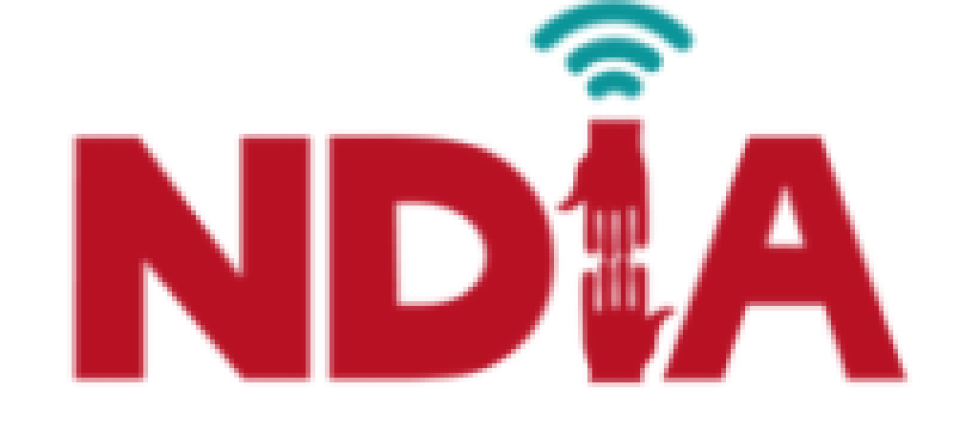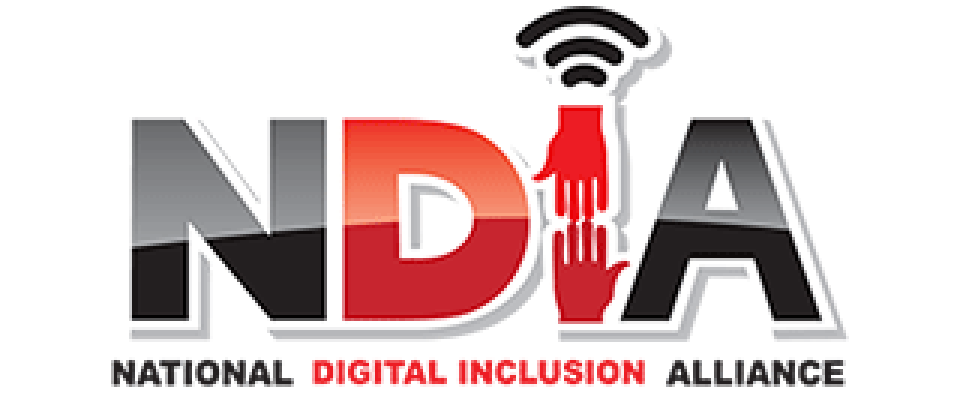
Fast, affordable Internet access for all.

Last week we invited you to save the date for a two-hour livestream event Building for Digital Equity: Demystifying Broadband Policy and Funding that the Institute for Local Self-Reliance (ILSR) is co-organizing with the National Digital Inclusion Alliance (NDIA).

We told you this event – which will be held on Wednesday, March 16th, from 2-4pm ET – was not going to be your average conference or webinar with 45-minute panels that make your derriere doze off or your eyes glaze over like a stale donut.
We are aiming for a fast-paced, fun, and interactive virtual gathering of network builders, local stakeholders, policy advocates, and funding experts from across the country that will feature a mix of short presentations, a sprinkling of trivia and prizes, and panels with Q & A’s that will be accessible on a variety of popular social media platforms.
Well, the event is coming together, promising to offer practical insights on how communities can seize this unprecedented moment to pursue community-driven broadband solutions.
You can register for the event here.
Here’s a sneak peek at the line-up:
We're living through a time with an unprecedented level of broadband infrastructure funding, fueled not only by the American Rescue Plan, but the Consolidated Appropriations Act, the Coronavirus Capital Projects Fund, and the Infrastructure Investment and Jobs Act. Hundreds of community-driven projects are already underway, but finding solid footing amidst these programs, statutes, and evolving rules is difficult.
To help, the Institute for Local Self-Reliance is teaming up with the National Digital Inclusion Alliance for a two-hour livestream event to demystify the landscape. On Wednesday, March 16th, from 2-4pm ET, we're hosting an online conversation to bring together local stakeholders, policy advocates, and funding experts in one place. We're calling it Building for Digital Equity: Demystifying Broadband Policy and Funding.

But this isn't your average conference or webinar, with 45-minute panels that make your butt go numb and your eyes glaze over. Oh no. We're aiming for a fast-paced, fun, and most importantly interactive conversation between policy advocates, network builders, local officials, and anyone else interested in learning how we can ensure that the tens of billions in upcoming infrastructure funding goes to solving the connectivity crisis permanently rather than once again disappearing into the pockets of the monopoly Internet Service Providers (ISPs).
In this episode of the Connect This! Show, co-hosts Christopher and Travis Carter (USI Fiber) are joined by regular guests Kim McKinley (UTOPIA Fiber) and Doug Dawson (CCG Consulting) to talk about current events in broadband.
The panel will reflect on RDOF: one year later, how demands for remote work are fueling the broadband boom, and the latest news in broadband.
Subscribe to the show using this feed on YouTube Live or here on Facebook Live, or visit ConnectThisShow.com
Email us broadband@muninetworks.org with feedback and ideas for the show.
Watch here on YouTube Live, here on Facebook live, or below.
The FCC’s Rural Digital Opportunity Fund (RDOF) Reverse Auction was completed a little more than a year ago to much fanfare and spilled ink, and though we’ve seen irregular updates over the last twelve months, we thought it worth the time to round up what we know so far in an effort to see where we’re at and determine what is likely to come.
The RDOF was built to award up to $20.4 billion in grants over 10 years using competitive reverse auctions generally won by the lowest bidder. The money comes from the Universal Service Fund fees affixed to consumers’ monthly telecom bills. The previous FCC announced $9.2 billion in auction winners in December of 2020.
To date the FCC has announced five rounds of Authorized funding released, six rounds of applicants whose bids they have decided are Ready-to-Authorize, and three rounds of Default bids. In total, a little more than half of the $9.2 billion won during the auction has been handed out as of January 14th, 2022, with another $1.3 billion announced on January 28th as ready to be disbursed shortly.
It’s clear that the final picture is still taking shape, but looking at things a year later leaves us feeling a little better than we were immediately after the auction closed. To date, it appears the FCC is closely scrutinizing many of the bidders that most worried industry veterans and broadband advocates, while releasing funds for projects that will bring future-proof connectivity to hundreds of thousands of homes over the next ten years.
Moving Slowly on Problematic Awards
The biggest news so far is that of the top ten winners, seven look to have received no funds at all (see table below or high-resolution version here). That’s $4.1 billion worth of bids for almost 1.9 million locations, and includes LTD Broadband, SpaceX’s Starlink, AMG Technologies (NextLink), Frontier, Resound Networks, Starry (Connect Everyone), and CenturyLink. This is a big deal.
It can be difficult to track all of the federal funding opportunities out there these days for communities looking to improve local Internet access. Even more difficult is parsing through all the ways they can be used, and charting a path to successfully weave them together to achieve local broadband goals. To help, we published our "Community Guide to Federal Funding Opportunities" in September, followed up by a look at what the recently passed Infrastructure Investment and Jobs Act (IIJA).
But Common Sense Media recently put out a Federal Broadband Funding Guide packed with useful information and well worth bookmarking for future use. It breaks down the buckets of broadband money not only in the IIJA, but from the American Rescue Plan, the Consolidated Appropriations Act of 2021, and the other ongoing programs like USDA ReConnect.
The value of the guide comes from Common Sense including clear and concise descriptions of the legislation, the amount of money allocated in them, who the funds will be flowing to and in what ways, what the deadline is to use the funds, and if they can be dedicated to infrastructure, devices, affordability, or equity and inclusion projects. Check it out here, or download below.

This week on the podcast, Christopher is joined by Matt Schmit, Director of the Illinois Office of Broadband and Chair of Illinois Broadband Advisory Council. During the conversation, the two discuss Illinois’ $420 million investment in broadband infrastructure as part of the Connect Illinois Broadband Grant program, the challenges in and solutions to both rural and urban settings, and how the Illinois Connected Communities program has helped at all stages of the process. Christopher and Matt also talk about state goals with the new federal money on the way, and the innovation in models, financing, and deployment we’re likely to see with the influx of spending in the near future.
This show is 46 minutes long and can be played on this page or via Apple Podcasts or the tool of your choice using this feed.
Transcript below.
We want your feedback and suggestions for the show-please e-mail us or leave a comment below.
Listen to other episodes here or view all episodes in our index. See other podcasts from the Institute for Local Self-Reliance here.
Thanks to Arne Huseby for the music. The song is Warm Duck Shuffle and is licensed under a Creative Commons Attribution (3.0) license.
In this episode of the Connect This! Show, co-hosts Christopher and Travis Carter (USI Fiber) are joined by Kim McKinley (UTOPIA Fiber) and Doug Dawson (CCG Consulting) to kick off the new year.
The panel will dig into the recently released Final Rules released by the Treasury on use of the Rescue Plan dollars, before diving into some regional developments in New York and Los Angeles. They'll end by sharing some thoughts about how the broadband landscape is likely to shape up during the coming year.
Subscribe to the show using this feed on YouTube Live or here on Facebook Live, or visit ConnectThisShow.com
Email us broadband@muninetworks.org with feedback and ideas for the show.
Watch here, or below.

For episode 15 of our bonus series, “Why NC Broadband Matters,” Christopher Mitchell is joined by Catharine Rice (Co-founder of NC Broadband Matters and Project Manager at the Coalition for Local Internet Choice) and Doug Dawson (Owner and President of CCG Consulting) dig into what all these different pots of federal funding mean communities across the country. They talk about the communities that have already announced plans to use the funds for municipal networks. They offer advice and direct communities in the early stages of planning to resources on how to use the funds effectively.
This show is 38 minutes long and can be played on this page or via Apple Podcasts or the tool of your choice using this feed, or at the NC Broadband Matters page. We encourage you to check out other "Why NC Broadband Matters" content at the podcast feed so you don't miss future bonus content that may not appear in the Community Broadband Bits Podcast feed.
Transcript below.
We want your feedback and suggestions for the show-please e-mail us or leave a comment below.
Listen to other episodes here or view all episodes in our index. See other podcasts from the Institute for Local Self-Reliance here.
Thanks to Arne Huseby for the music. The song is Warm Duck Shuffle and is licensed under a Creative Commons Attribution (3.0) license.

On this week’s episode of the Community Broadband Bits Podcast, Christopher Mitchell invites the Community Broadband Networks Initiative staff onto the show to talk about what they believe were some of the biggest broadband stories of 2021. The group reminisces about what has been one of the most pivotal years for broadband infrastructure investment and community-led solutions to the digital divide, and ruminates on what’s to come in 2022.
This show is 60 minutes long and can be played on this page or via Apple Podcasts or the tool of your choice using this feed.
Transcript below.
We want your feedback and suggestions for the show-please e-mail us or leave a comment below.
Listen to other episodes here or view all episodes in our index. See other podcasts from the Institute for Local Self-Reliance here.
Thanks to Arne Huseby for the music. The song is Warm Duck Shuffle and is licensed under a Creative Commons Attribution (3.0) license.
In an effort to facilitate the deployment of innovative broadband solutions in underserved areas - both urban and rural - the nonprofit organization US Ignite recently partnered with National Science Foundation (NSF) and Schmidt Futures to launch ProjectOVERCOME.
The Benton Institute released a report in November naming the seven communities that the project will focus on: Blue River, OR; Buffalo, NY; Cleveland, OH; Clinton City, MO; Detroit, MI;Loiza, Puerto Rico; and Yonkers, NY.

In the report that was released, Benton spotlights each community and the technologies they will use. The technologies include Citizens Broadband Radio Service (CBRS), fiber, fixed wireless and hotspots.
According to the initiative's guidelines, these communities were chosen because of how they vary in population, demographics, regions of the country, housing, and industry. The program will work with these communities to experiment in deploying innovative Internet connectivity solutions on a 12-month timeline.
The projects will collectively result in not only education, outreach, and local broadband organizing development efforts, but provide direct connectivity to more than 700 households.
For example, in a CBRS deployment in New York,